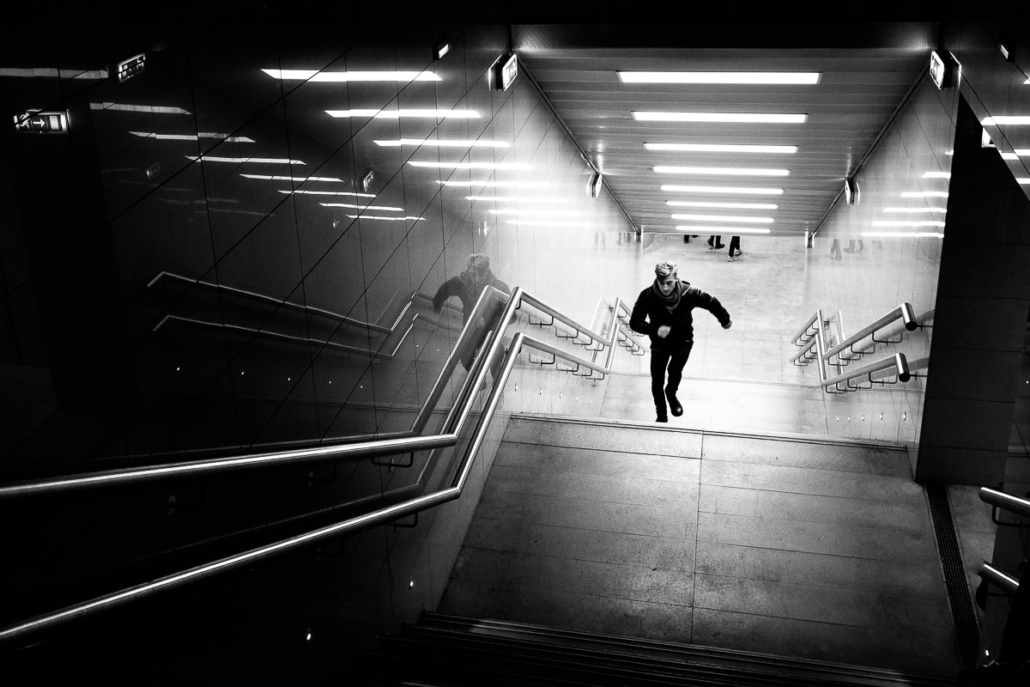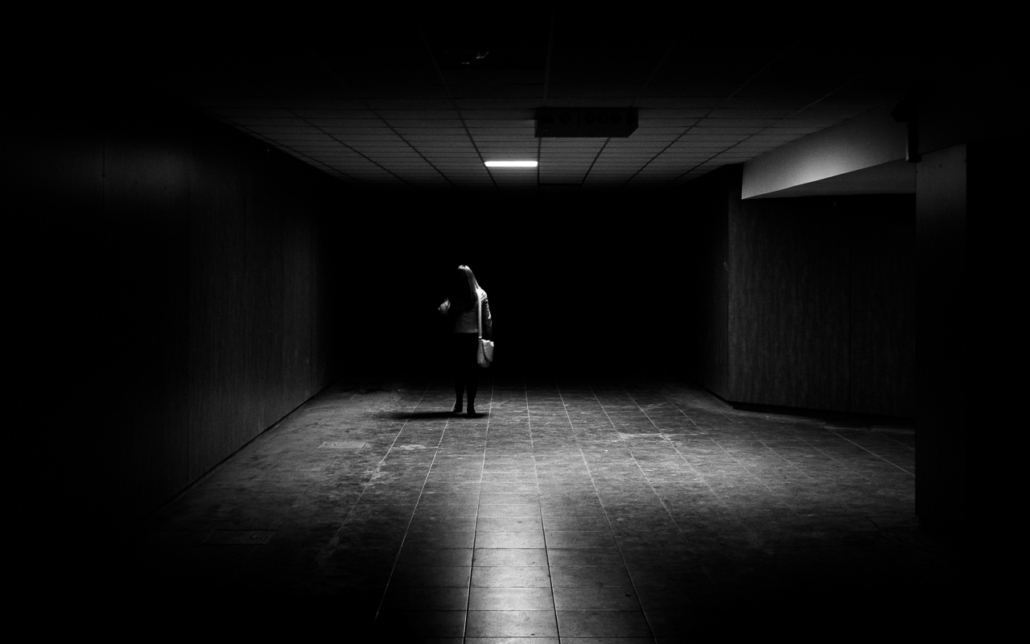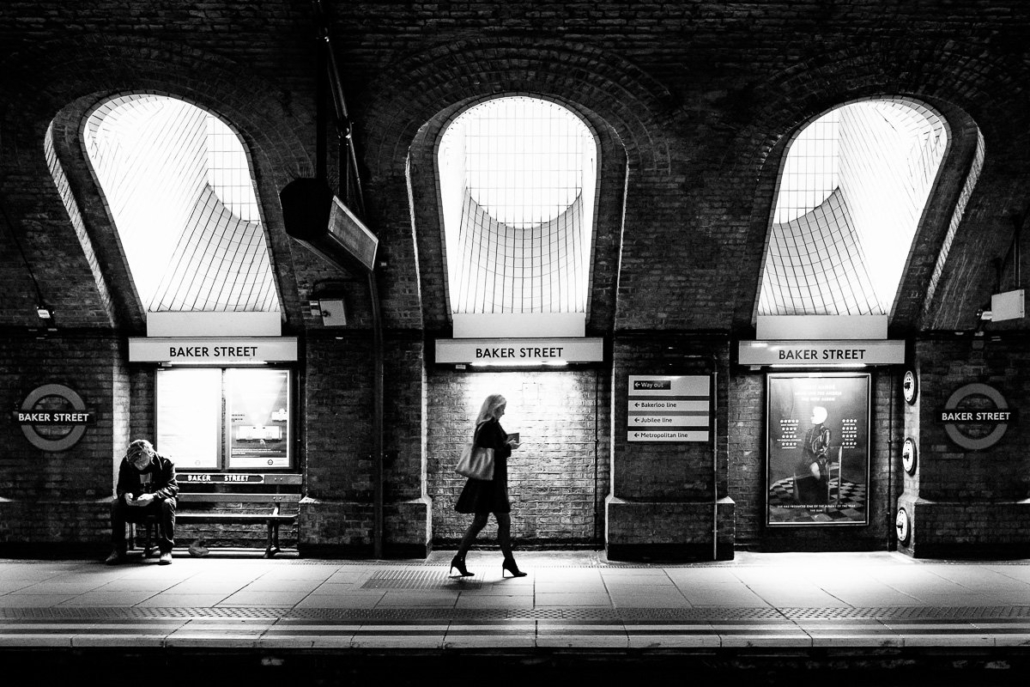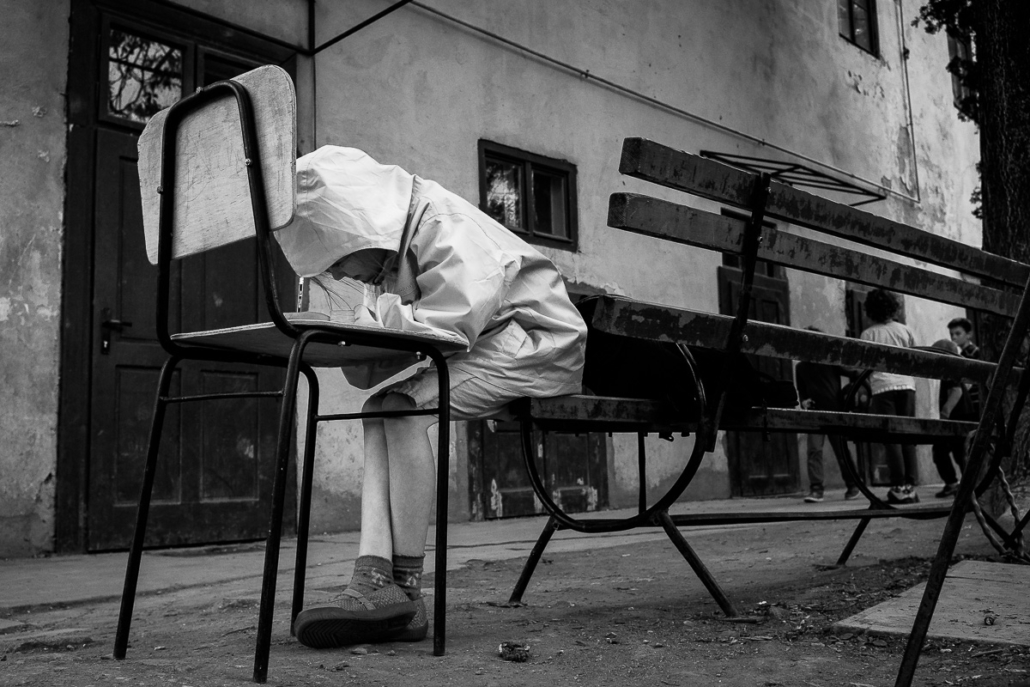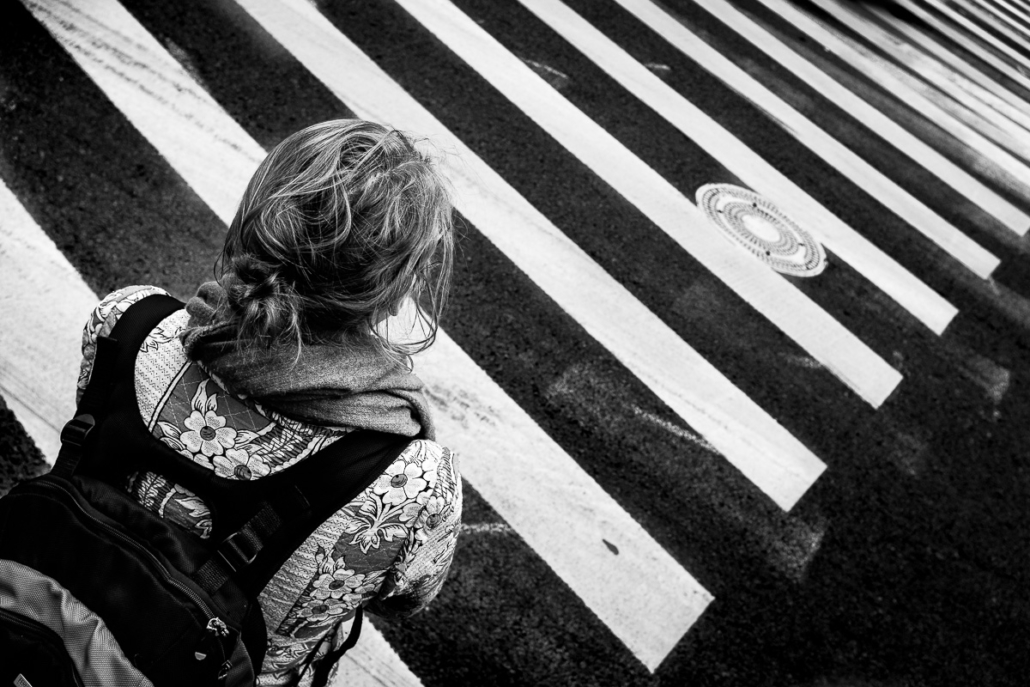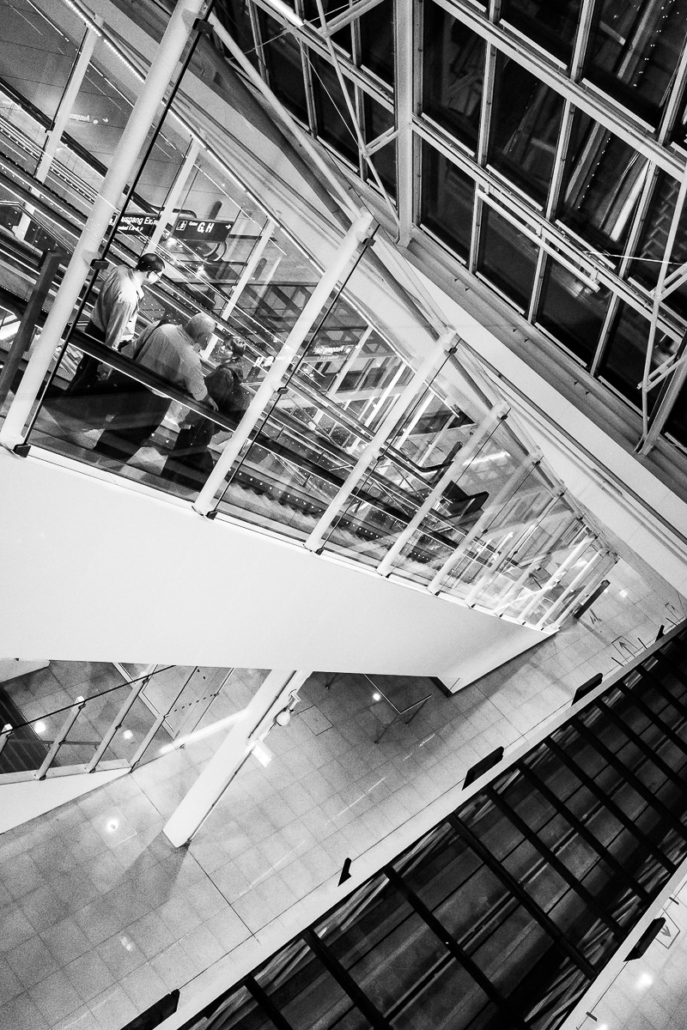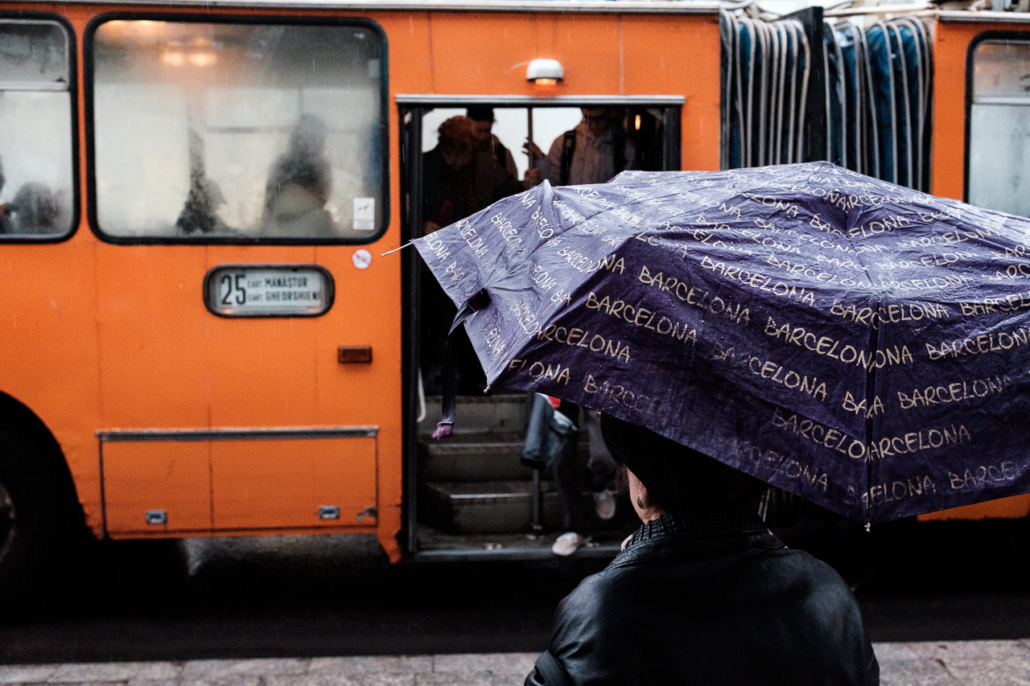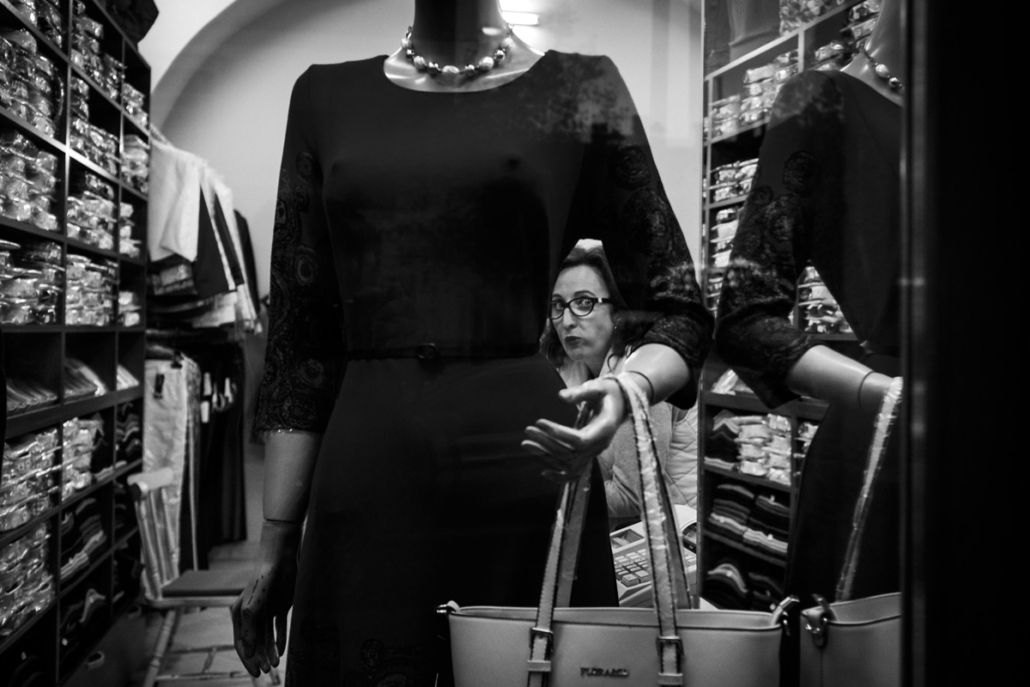Small camera, big hands
When I first tried the Fujifilm X100T (review here) at Yodobashi Akihabara in Tokyo, I was very pleased by its small size hand good handling despite my larger hands. I bought it s few months later, but immediately a problem appeared: it was impossible for me to get a comfortable grip on the camera, without becoming painful after 30 minutes. I searched over the interwebs and…
Enters the Lensmate Thumbrest
The Lensmate Thumbrest is tiny little piece of black aluminum that came directly from the USA to my mailbox and was installed a a few nanoseconds in the hotshoe of the camera. The first impression is mainly positive: pieces of rubber make sure the Thumbrest sits well and tight in the hotshoe, as well as under the small part that will sit on the top of the camera. Another one placed under the thumb gives even more grip. Everything feels solid. The shutter speed wheel is a bit hidden by the thumb rest but no big deal for me. The small wheel at the thumb is however trickier to reach and use now. Nothing too harsh, only the people with the bigger fingers may be affected. The only “issue” is that the black color is not exactly the same as the top of the X100T, which hurts my OCD. But it’s quite close, so no really big deal.
In action
With the Lensmate Thumbrest mounted on the camera, the grip is instantly improved. I am now confident I can keep my camera in my hand for a long time. You don’t need to handle it firmly, you’re not in pain anymore. And it doesn’t add to the bulk a grip does. After a few months of abuse I’m also delighted to see the is no fiddle in the hotshoe, which was one of my concerns when buying a thumb rest. Everything is still in place, not moving a millimeter.
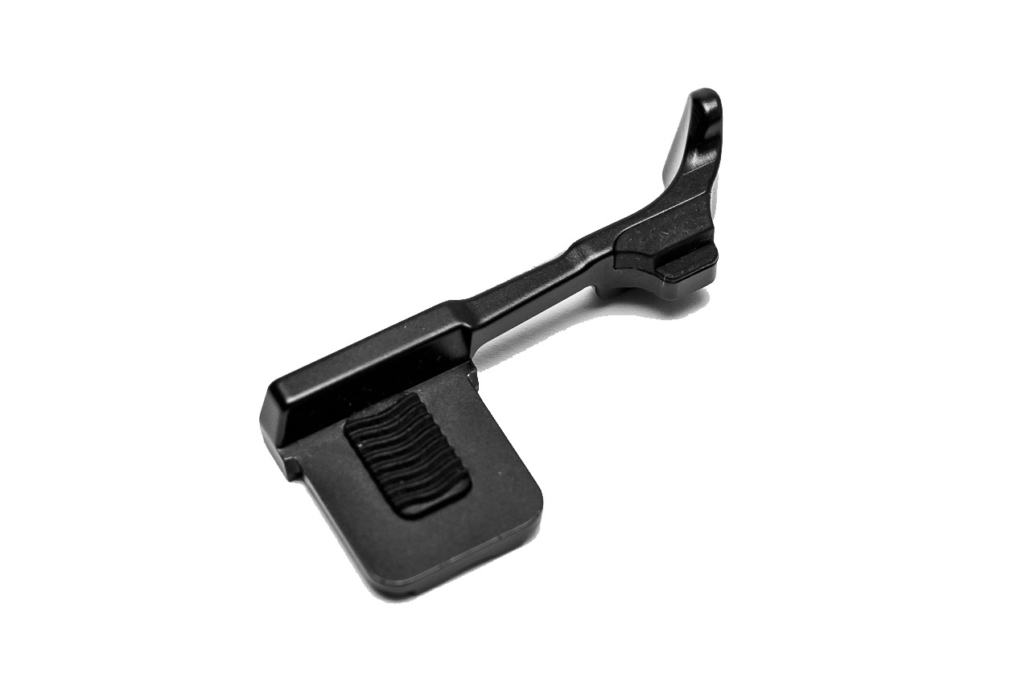
Conclusion
As a short, I’m delighted with the Lensmate Thumbrest which adds only pluses to an already great camera. It’s an accessory that will be added by default to all my cameras that need better grip. The only caveat remains the black color which is not the same as the camera… it could be worse, right?
Street photography is not staged
Street photography is not staged, it’s all about the instant. It’s not landscape photography, where things are quite static (weather excepted). It’s not studio photography where you can direct you subject at your will. It’s not even this pseudo street photography we can see more and more on Instagram, which is actually studio style shoot in natural light, in the streets. No, nothing is staged in street photography, nothing is static, nothing waits for you or for your orders. Every seconds, sometimes even less, count, sometimes you shoot by reflex, not looking at your camera or even at your subject, because the moment, the instant is right now, not the second later. Which sometimes gives interesting shot, often they are only megabytes to free on your memory card…
A typical “reflex shot” taken while walking. It gave a nice photo with a contrast between the two subjects, and the shadow line separating them. If only I’ve had been more prepared, the framing would have been way better… and the shot more spectacular!
Things go fast, but keep a slow pace
Imagine yourself in a very busy street that you don’t really know, people passing by you in a rush, angry drivers use their horn more than they should, there is advertising everywhere. Everything go fast, there is a lot happening at 360 degrees around you, interesting things that may be a great shot, you rush too, you try to go fast, you may indeed take a few good shots… but I can bet you’ll be disappointed by your keeper ratio in the end. Good shots, but very few great shots, if any.
Now, go back a little bit in time, at the same spot you were, and look around you, just look, maybe try a few shots for framing tests, but go slow, observe.
Owning the scene!
That is owning the scene. Take the time to make this unfamiliar scene yours. It may take a few seconds, it may take a few minutes, but be sure to understand what’s going on. What could be a great background? Where are the shadows, how is the sun moving and affecting them? Is there a pattern in the people’s behavior, does someone break this pattern and could be a good subject? That often makes a great shot! Is there a moving subject that can be captured in motion by doing a longer exposure? Is there anything fitting my ongoing projects? That is owning the scene, that is knowing and understanding what is going on in front of you… and actually at 360 degrees! You are not staging your scene, you are planning it for the right moment, the right instant where the magic happens.
The very first shot of the “Commuting” project. It required a bit of work to get the right shutter speed to capture the movement without being too abstract, and also to know when to release the shutter so that it doesn’t get messy while filling the frame. While experimenting I was on the other side of the street next to the red light and found the pattern I wanted: much more people were coming from the side I took the photo, and I knew the effect would be better being closer to the largest amount of people.
… And keep owning it
Now that you own the scene, that you’ve stayed in your spot for a few minutes (or sometimes much more 😀 ) in order to capture THE shot, keep looking. The light may be changing, the people’s behavior may be different, it’s an ongoing process. Maybe now, you can switch from shooting people passing in front of this nice reflection with a giant, funny ad in the background to shooting them under neon lights when the sky goes darker. Because you keep observing, you keep owning the scene, you feel confident in what you are doing, you know what is changing, or what is going to change. You’ll be able to anticipate and to take advantage of it, not have it ruin your moment. Last but not least, you may be even more observant to those “reflex instant shot” that are still happening anyhow!
One of my favorite shots of 2015. It started at the corner of the street, then the steam started being released so I moved a bit closer to have a more foggy atmosphere. And the light on the right was turned on and this graffiti appeared, I rethought the whole thing and made the shot when people were passing by the graffiti, as if it was looking at them. Perfect example of evolving scene.
Less shots, but more keepers
Since I’ve been using this small technique I’ve observed that I actually shoot way less than when I was spraying here and there, with a much higher keeper ration as I plan my shoot, my settings, my framing, etc. It means less time in front of the computer, and much more time shooting!
Think different.
OK, I might be shamelessly stealing Apple’s famous slogan, but that’s truly how I feel about Fujifilm’s X100T.
Run! – Fujifilm X100T – B&W simulation – f/2.8 – 1/125s – ISO 6400. Get an original, signed print in limited edition.
–
At the time I’m writing this article I’ve been using the X100T for 2 months. 2 months where my photography has changed, and hopefully improved, quite a bit.
I’ve been shooting for the last year mainly Canon DSLRs, with some incursions into the Nikon territory, always using the top-tier full frame gear. Image quality wise, nothing to say, great stuff, consistent results, what pros or serious amateurs want. You know your camera; it delivers the stuff without bad (or good) surprises. This setup has, at least for me, one drawback: it kind of lacks soul.
This is what struck me with the X100T: it doesn’t feel like a camera, it more feels like a photography companion, a friend that sticks with you and want to help you get different shots. The shooting experience is second to none, Fujifilm really did a photographers camera, not a geeky specs maxed out camera. Which is not necessarily a bad thing, when well executed.
Fuji’s approach in having the main controls directly accessible by hand (Aperture, Shutter speed and Exposure compensation) is a great idea. When using the X100T it feels like I’m back using my films cameras, where there is no menus, no screen full of information… It doesn’t mean Fujifilm’s camera isn’t packed of features, it just mean that there is no need to go thru the menus every second shot. It’s a much more tactile feeling that with the current DLSRs, something I am very sensible on. I like to touch things, have direct buttons and controls rather than browsing a screen.
Strangers in the Dark I. Fujifilm X100T – f/2.8 – 1/60s – ISO 1600. Get an original, signed print in limited edition.
–
I usually just set my aperture, shutter speed and exposure compensation, and let the camera choose itself the ISO value. It has a very practical Auto ISO mode (actually, 3 modes) with minimum and maximum ISO values, as well as the slowest speed it can go if you let it have control of the shutter speed. In this setup I can forget the fact it’s a feature packed digital camera and browse the streets focusing on what’s happening, looking at nothing but my viewfinder. If I need to change a setting, it’s a wheel to rotate, nothing else. Just like a modern film camera.
The X100T packs Fujifilm’s X-Trans 16MP APS-C CMOS sensor. I must say I was a bit reluctant in going back to APS-C after years of full frame. I’m pretty please of the results: this sensor coupled with the 23mm f/2 lens (35mm equivalent in the full frame world) gives quite sharp pictures, with a very acceptable noise up to ISO 3200. ISO 6400 is still usable, but with less margin than a full frame camera such as my Canon 6D. Actually I like having a larger depth of field for street photography, so the APS-C sensor may actually be a plus for the X100T.
Strangely, I would say image quality doesn’t really matter for this camera. Its scope is not to replace my 6D in every single usage. Its scope is to be with me all the time, in my pocket, in my bag, everywhere I go.
Having a large camera taking awesome shots is great, but at some point you can’t have it with you all the time, you can’t be discrete with it. It’s big, heavy and cumbersome. Very often I didn’t take my large DSLR rig with me at events or party, having to rely on my phone or on crappy point and shoot camera, and missed awesome shots? Way too much. How often did I miss an incredible candid expression in the street because I got spotted in the last moment with my big camera? Yeah, you got the idea.
Baker Street Underground station. Fujifilm X100T – B&W simulation – f/4.0 – 1/60s – ISO 3200 – Get an original, signed print in limited edition.
–
While I know I may not get the ultimate image quality with this small camera, I know I’ll be able to get “good enough” shots in the very last majority of times, including shots I would have never had with my big rig. And that is priceless to me. That is a new way to take photographs, being and feeling always ready to shoot. It keeps me more alert in the streets, more attentive to details, colors and contrast.
That’s where I feel I’ve improved my photography in the last weeks. I’ve went from capturing a scene in a very clinical way, searching for maximum sharpness and having the frame full of details, to something a bit more abstract, less “ultimate image quality” oriented to a more “feeling” oriented photo. Exact like how I feel when using my Canon 6D versus my Fuji X100T.
And the funny thing is all of that… is that every single photographer that have used my camera in the last weeks have all felt the same way 🙂
One last thing… for the first time in years I’m comfortable shooting JPEGs. Fujifilm has done an incredible work having a reliable auto white balance, and pretty awesome film simulations giving a great look and the correct dose of instant gratification on any shot you’ll take. You can even bracket the simulations and decide later what to keep. The simulations are also available as camera profiles in Adobe Lightroom, so even if I shoot RAW I can process them much faster than the Canon RAWs. In general, I feel that the Fuji RAWs are easier to process than Canon RAWs.
Little girl. Fujifilm X100T – f/5.6 – 1/500s – ISO 1600 – Get an original, signed print in limited edition.
–
Of course, not everything is perfect. The battery life is ridiculously short; it’s like when I got my first smartphone, always looking for a plug to charge it! Hopefully it can charge via USB, so I don’t need to take the external charger with me. But I know that for a walk of more than half a day I need a second battery.
My second regret is the choice of a focus by wire for its lenses. I just don’t like the feeling of it, without beginning or end, without depth of field scale. I enjoy zone focusing for my street shots and I can’t do it without looking at a screen. However, manual focus is a child’s game thanks to the hybrid viewfinder and the focus peaking with zoom on the focus zone.
Last regret, that its lens is not a 50mm equivalent, which is ma favorite focal length. At least this way, at 35mm equivalent, it gains versatility. And there are the two 28mm and 50mm equivalents you can screw on the filter thread, if needed. But it adds to the bulk, so no way for me, for now.
So, in the end, I’m really pleased with my experience with the Fujifilm X100T (if it wasn’t obvious already J). It has become like an extension on my right hand, it’s my photography companion that is always there for me. It’s often called the “poor man’s Leica”… let’s say I’m glad I’m a poor man! And last but not least, I feel like a better photographer, which is pretty much every photographer’s goal, no?
Edit: The X100T gets even better for me with the addition of a Lensmate Thumbrest!
Dutch angle – Fujifilm X100T – f/5.6 – 1/500s – ISO 320 – Get an original, signed print in limited edition.
–
Airport stairs – Fujifilm X100T – f/8.0 – 1/125s – ISO 6400. Get an original, signed print in limited edition.
–
Barcelona. Fujifilm X100T – Classic Chrome film simulation – f/5.6 – 1/250s – ISO 6400
–
Surprise! – Fujifilm X100T – B&W simulation – f/2.8 – 1/60s – ISO 1600. Get an original, signed print in limited edition.
–
Strangers in the Dark III. Fujifilm X100T – B&W simulation – f/2.8 – 1/60s – ISO 6400. Get an original, signed print in limited edition.

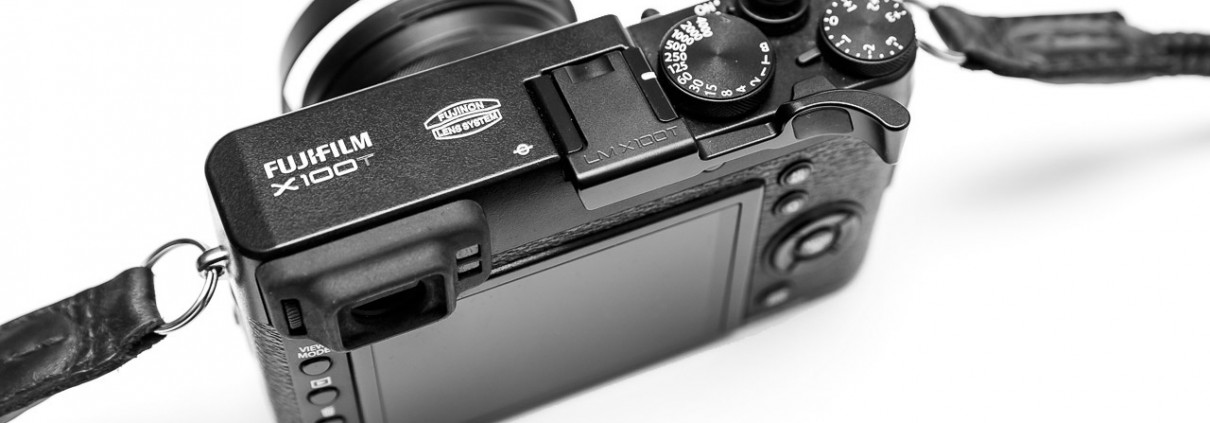
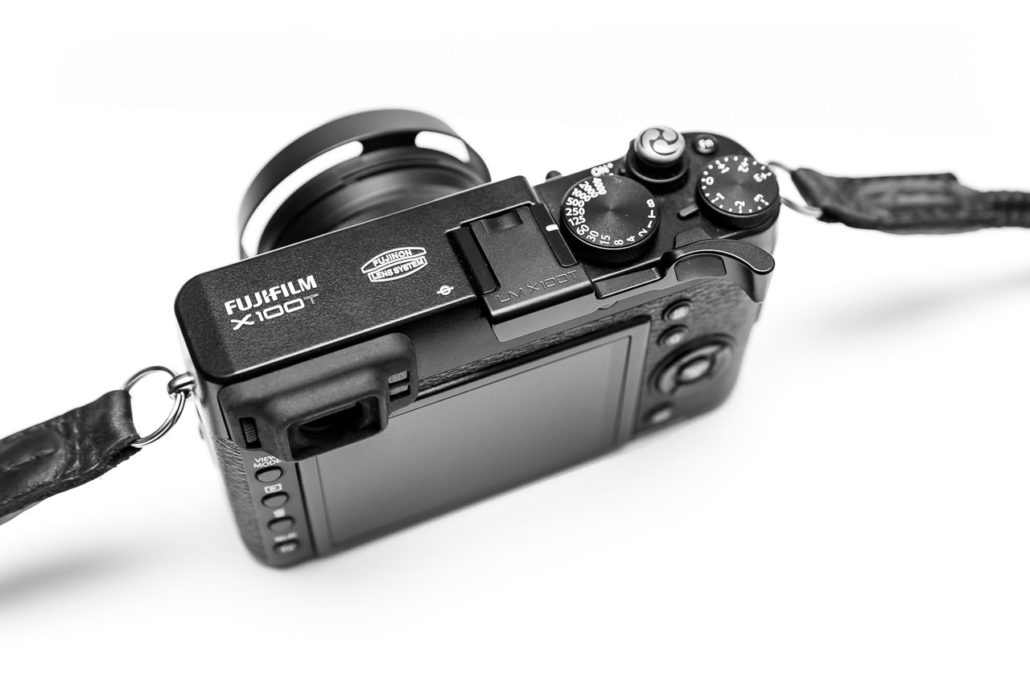
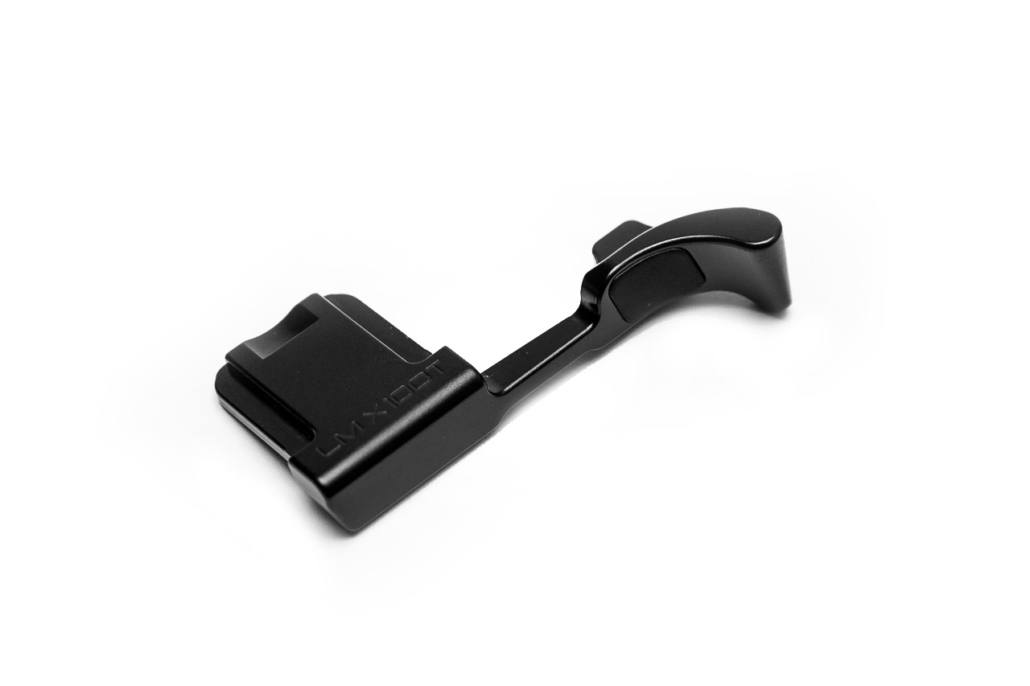
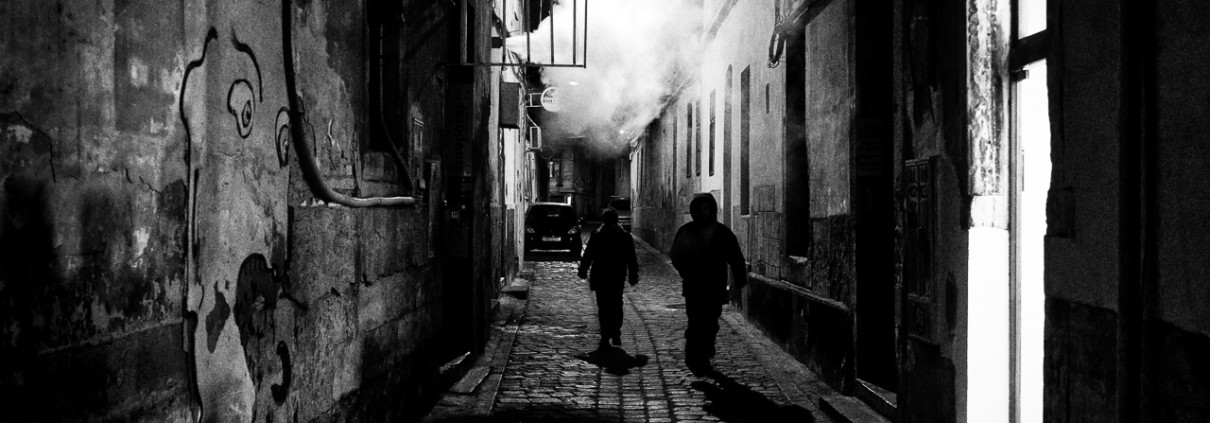
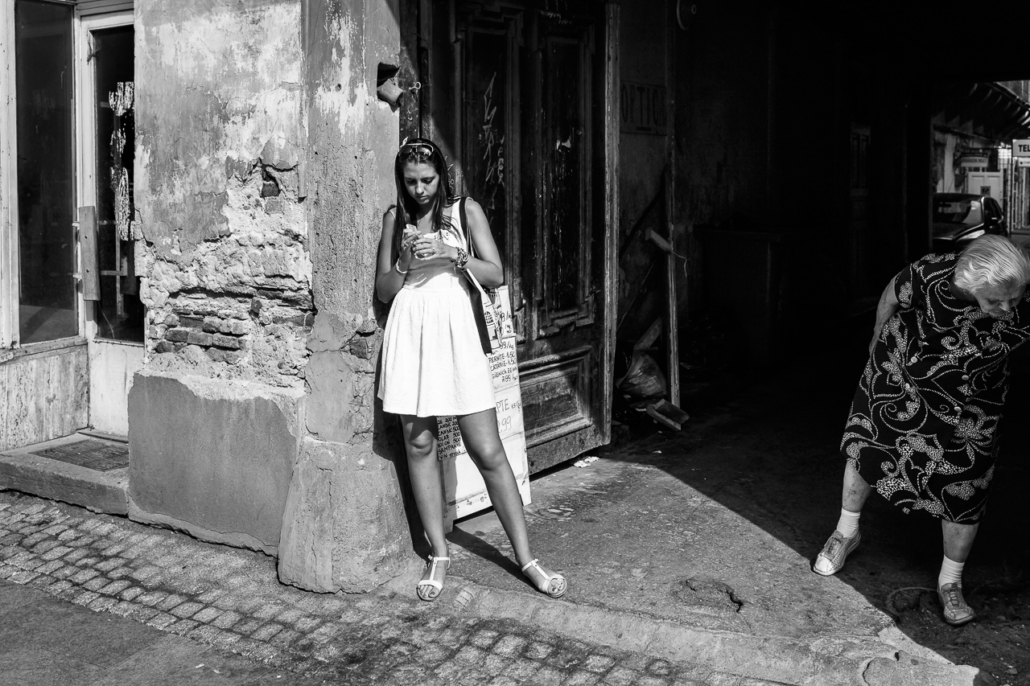
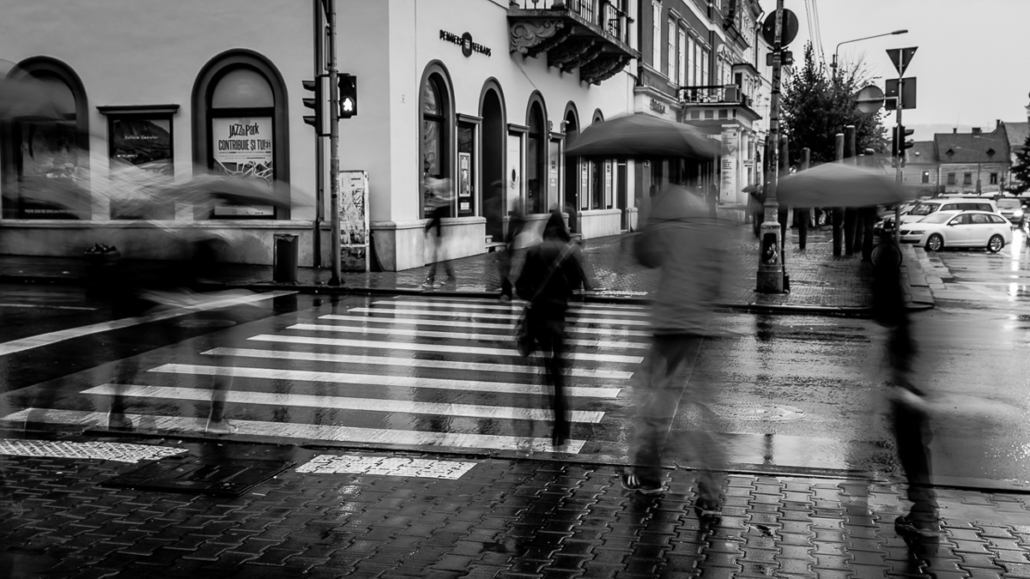
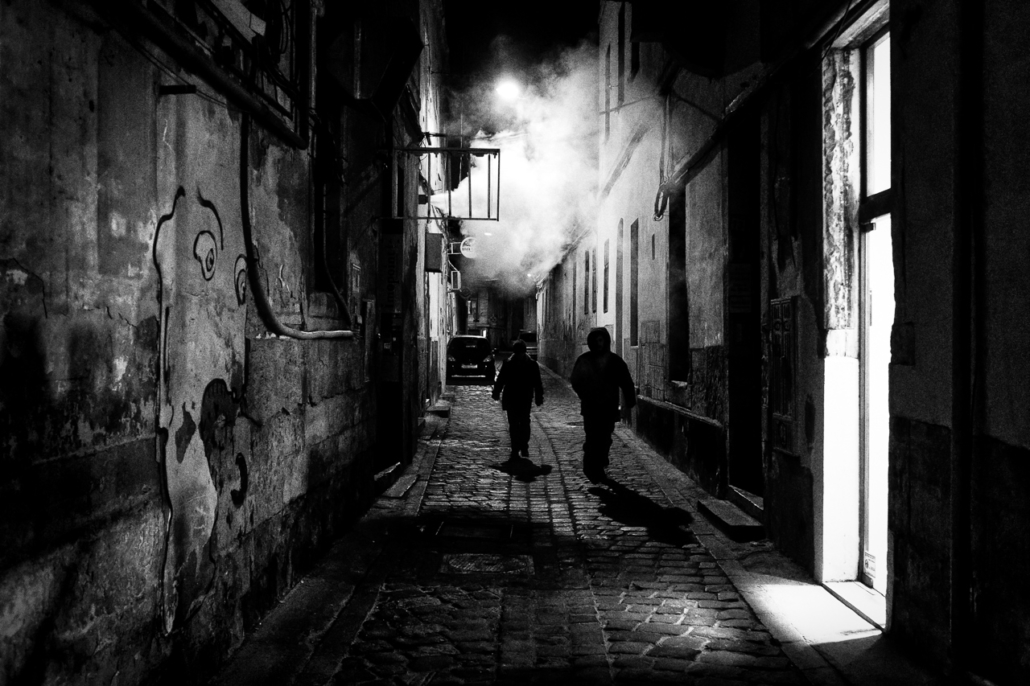
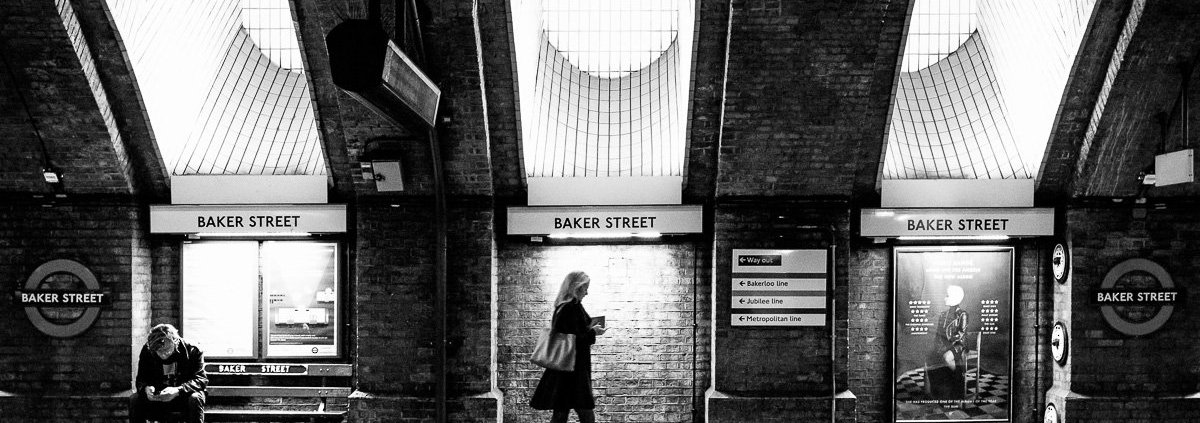 Pierre Pichot 2016
Pierre Pichot 2016